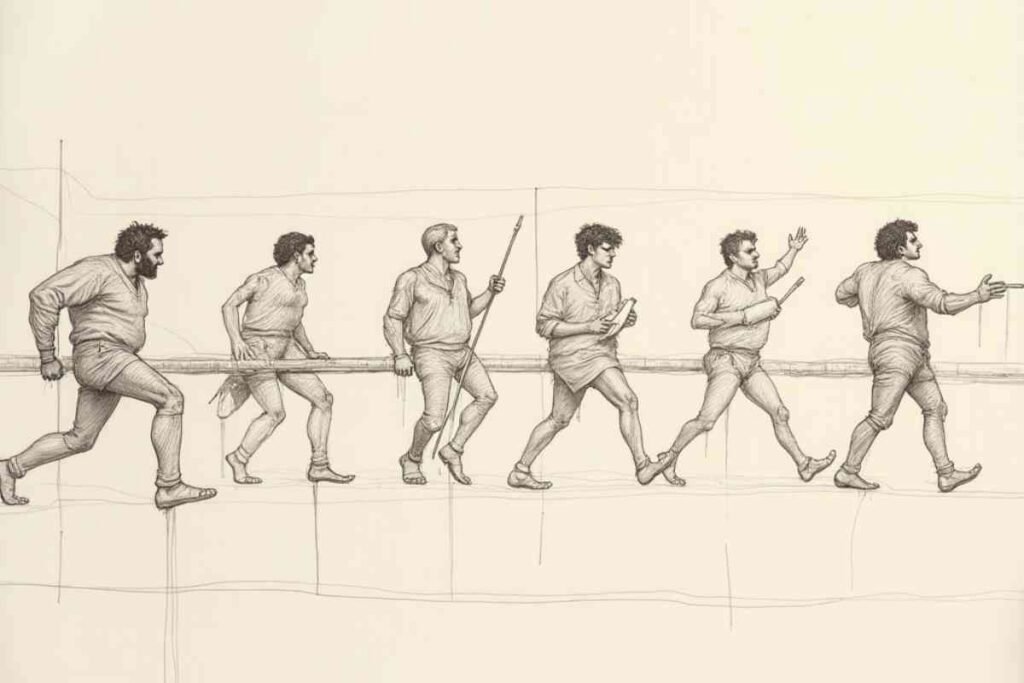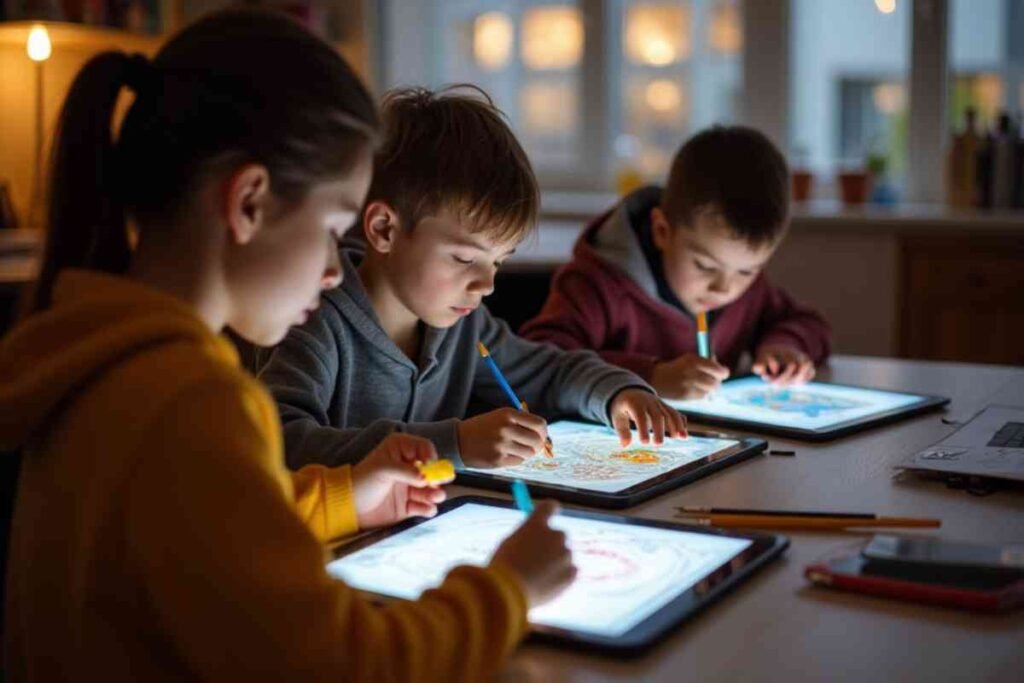Education drawing is a method that blends creativity with learning. It allows students to understand lessons in a more visual and engaging way.
Through Education Drawings complex topics become easier to grasp. This makes education not only effective but also enjoyable.
If you want to discover how art can transform your learning experience keep reading. This guide will open new doors to fun and smart learning.
The History and Evolution of Education Drawing

The history and evolution of Education Drawings dates back to ancient times when people used simple sketches to explain ideas.
Over the centuries Education Drawings became a powerful tool in schools to teach complex subjects more visually. During the Renaissance artists and scholars refined drawing techniques making them essential for science architecture and learning.
In modern education dra.wing is used not only for art but also for improving memory creativity and problem solving skills.
Today Education Drawings continues to evolve with digital tools making learning more interactive and engaging for students worldwide.
The Ancient Beginnings of Education Drawing
Education Drawings has roots deep in human history. Early humans communicated through cave drawings and pictographs laying the foundation for visual learning.
These illustrations were not just art but also educational tools helping communities record hunting strategies rituals and survival techniques.
Civilizations such as Egypt Mesopotamia and China elevated drawing to a systematic form of education. Egyptian hieroglyphs for instance combined symbols and art to teach religion governance and social structure.
The Role of Drawing in Classical Education Drawings
In ancient Greece and Rome drawing became an essential skill in formal Education Drawings Philosophers and teachers used diagrams to explain geometry astronomy and anatomy. Plato and Aristotle recognized the power of visuals in shaping understanding.
Similarly Roman educators relied on maps and technical sketches for military and architectural training. Education dra.wing became a bridge between abstract thought and practical application.
Education Drawing in the Renaissance
The Renaissance marked a turning point for Education Drawings. Artists like Leonardo da Vinci and Michelangelo combined scientific study with artistic mastery.
Da Vinci’s anatomical sketches for example were not just artistic masterpieces but also educational tools that transformed medicine.
During this period universities integrated drawing into curricula for fields such as engineering architecture and the sciences.
Education Drawing in Modern Times
With the rise of printing and later digital technology education dr.awing evolved into a more accessible and structured discipline.
Illustrations in textbooks chalkboard sketches by teachers and scientific diagrams became integral to formal education systems worldwide.
Today the combination of digital drawing software and traditional methods has expanded education d.rawing into new fields like virtual simulations online learning platforms and interactive classrooms.
Importance of Education Drawing in Learning
Education Drawings is important because it helps students understand ideas visually and makes learning easier.It also boosts creativity memory and problem solving skills making education more engaging and effective.
Cognitive Benefits of Education Drawing
Education Drawings plays a critical role in brain development. Cognitive psychologists confirm that visual learning enhances memory retention by engaging both hemispheres of the brain.
Students who practice education drawin.g while learning new concepts are more likely to understand and recall information compared to those who rely solely on text. This dual coding process using both words and visuals makes drawing a powerful educational method.
Creativity and Problem Solving
Education drawing encourages creative thinking and problem solving. When students are asked to illustrate abstract ideas they must break down complex information into simple visuals.
This process strengthens analytical thinking and nurtures innovation. For example a student drawing the water cycle develops a more comprehensive understanding of how natural systems interact than by memorizing text alone.
Emotional and Social Development
Beyond academics education drawing fosters emotional intelligence. It allows students to express feelings and perspectives visually bridging communication gaps across cultures and languages.
Group Education Drawings activities in classrooms also build teamwork empathy and collaboration all of which are essential skills for personal and professional success.
Different Types of Education Drawing
Different types of education drawing include sketches diagrams charts and creative art that help explain ideas visually.These drawings make learning easier by turning complex topics into clear and engaging visuals.
Freehand Drawing in Education
Freehand Education Drawings is one of the most accessible forms of education drawing. It requires no tools beyond paper and pencil encouraging spontaneity and creativity.
Teachers often use freehand drawing in classrooms to introduce concepts while students use it to brainstorm and develop ideas.
Technical Drawing for Education
Technical Education Drawings is precise and structured often used in fields such as engineering architecture and design. Education drawing in this category emphasizes accuracy proportion and clarity.
Tools like compasses rulers and protractors are traditionally used though today digital CAD software has expanded its possibilities.
Diagrammatic and Illustrative Drawing
Diagrammatic education drawing is widely used in subjects like science geography and mathematics. Diagrams simplify complex processes such as cell division chemical reactions or planetary motion.
Illustrative Education Drawings on the other hand is applied in literature history and art education to visualize stories cultures and traditions.
Digital Drawing in Modern Education
With the rise of tablets styluses and interactive whiteboards digital drawing has revolutionized education. Students can create digital sketches interactive diagrams and collaborative projects.
Teachers can instantly share illustrations making education drawing more engaging flexible and environmentally friendly.
The Role of Education Drawing in Different Subjects
Education drawing plays an important role in different subjects by making concepts easier to understand and visualize. Education Drawings helps students connect theory with practice improving both learning and creativity.
Science Education and Drawing
From biology to chemistry science heavily relies on education drawing. Anatomical sketches molecular structures and physics diagrams simplify difficult concepts.
In biology for instance drawing the human heart helps students understand blood circulation better than written explanations alone.
Mathematics and Education Drawing
Mathematics is often perceived as abstract but education drawing brings it to life. Geometry algebra and calculus use visual representations like graphs geometric figures and coordinate planes to explain relationships and problem solving strategies.
History and Social Studies
In history maps timelines and artistic recreations of historical events help learners visualize past civilizations. Drawing enables students to connect emotionally with historical narratives making abstract timelines more relatable and memorable.
Literature and Language Learning
Education drawing also plays a significant role in literature and language studies. Storyboarding for example helps students analyze narratives while drawing characters or settings deepens their comprehension and creativity in storytelling.
Techniques and Methods in Education Drawing
Techniques and Methods in Education Drawing focus on different ways of teaching art such as step by step guidance and creative practice.
These approaches help students improve their drawing skills while making learning more interactive and enjoyable.
Observation Based Drawing
Observation Education Drawings trains students to see and interpret details accurately. It enhances concentration patience and understanding of proportion. In education observation exercises are often used in art classes and scientific illustrations.
Conceptual and Abstract Drawing
Conceptual Education Drawings allows learners to represent abstract ideas. This method is common in philosophy mathematics and design studies where visualization bridges the gap between theory and application.
Collaborative Drawing in Education
Collaborative Education Drawings activities foster teamwork and shared problem solving. For instance group projects like creating a class mural or illustrating a story encourage interaction and peer to peer learning.
Education Drawing in the Digital Era

Education Drawing in the Digital Era is changing the way students learn and express creativity.With digital tools and apps learners can now create drawings more easily and share them instantly.
Education Drawings combines traditional art skills with modern technology, making education more engaging.Students can explore new techniques, colors, and designs without the limits of paper.This digital approach not only improves learning but also inspires innovation for the future.
Digital Tools and Platforms
Modern education drawing is supported by digital tools like Adobe Illustrator AutoCAD and educational apps such as Procreate and Sketchbook. These tools allow precision creativity and the ability to share work instantly across platforms.
Online Learning and Education Drawing
In e learning platforms education drawing is widely used in explainer videos interactive lessons and visual tutorials. Animated illustrations make distance education more engaging and effective for learners of all ages.
Virtual Reality and 3D Drawing
The future of education drawing is expanding into virtual reality and 3D modeling. Students can now enter digital environments where they interact with three dimensional drawings making learning immersive and memorable.
Challenges in Education Drawing
While education drawing has many advantages it also faces challenges. Some schools lack resources for art education or prioritize rote learning over creative approaches.
Digital divides also limit access to modern drawing tools for students in underprivileged regions. Additionally some educators are not trained in integrating drawing techniques effectively which can reduce the potential benefits.
Just as education drawing makes complex ideas easier to understand through visuals the Master Formula Record simplifies pharmaceutical production by providing clear step by step documentation.
Conclusion
Education drawing is more than just an artistic skill it is a bridge between creativity and knowledge that makes learning easier and more engaging.
From ancient cave drawings to modern digital tools it has always played a powerful role in education and continues to shape the way students understand complex ideas.
By enhancing memory creativity and problem solving it transforms traditional learning into an interactive and enjoyable experience. As technology evolves education drawing opens new doors for innovation ensuring that learning remains both effective and inspiring for future generations.
FAQs
What is education drawing?
Education drawing is a learning method that combines creativity with visuals to make lessons easier to understand. It turns complex topics into clear illustrations, making education more engaging and memorable.
Why is education drawing important in learning?
It helps students improve memory, creativity, and problem-solving skills. By using visuals, learners can grasp difficult concepts faster and retain them longer.
How did education drawing start?
Education drawing began with cave paintings and pictographs used by early humans to communicate ideas. Over time, civilizations like Egypt and Greece developed it into structured educational tools.
What are the main types of education drawing?
The main types include freehand sketches, technical drawings, diagrams, illustrative art, and digital drawings. Each serves a different purpose in simplifying and visualizing lessons.
How does education drawing help in science and math?
In science, it simplifies processes like anatomy or chemical reactions through diagrams. In math, visuals like graphs, geometric shapes, and coordinate planes make abstract concepts easier to solve.
What role does digital drawing play in modern education?
Digital drawing allows students to create and share visuals instantly using tablets, apps, and software. It makes learning interactive, flexible, and innovative compared to traditional methods.
What challenges exist in education drawing?
Challenges include lack of resources, limited teacher training, and unequal access to digital tools. These issues make it harder to integrate drawing effectively into all classrooms.
How does education drawing benefit emotional and social development?
It allows students to express feelings visually and communicate across cultures. Group drawing projects also build teamwork, empathy, and collaboration among learners.